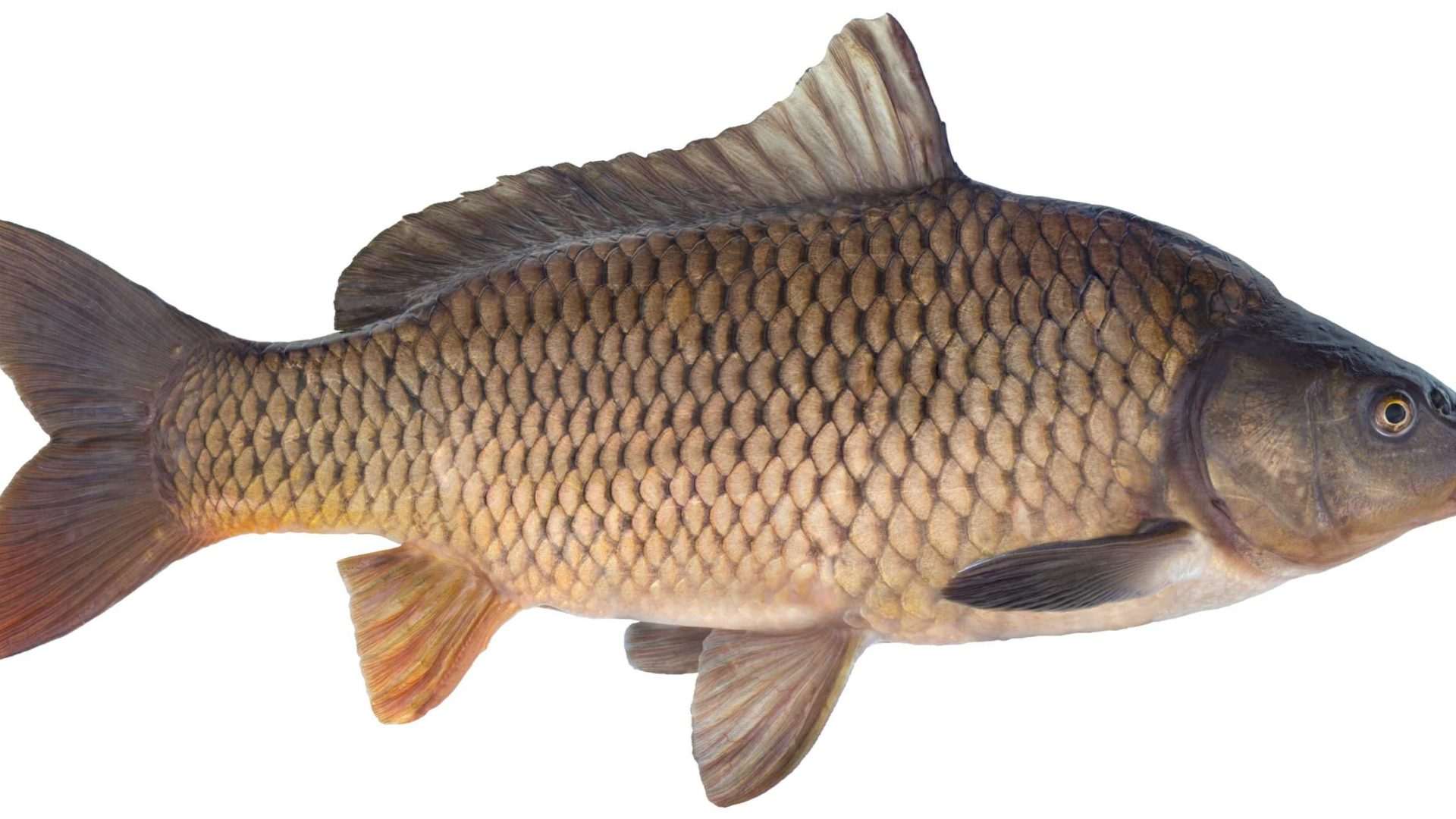Common Carp
Scientific Name: Cyprinus carpio
Toxicity Level
About The Fish
Common Carp Cyprinus carpio - scientific name
Bait such as corn and dough balls work well and various flies imitating crayfish or benthic insects can also be effective.
Both common carp and suckers can be taken by spear or bow and arrow from the Great Lakes and non-trout inland waters.
The Common Carp is a bottom feeder and considered a high toxic risk to eat. They can grow in the 50 pound range with records close to and above 60 pounds.
Body is light gold to dark brown in color with large scales covering entire body. Fins are often reddish and they do not have true spines.
Common carp have a triangular head with a blunt snout and thick nose plate.
In Michigan, they are found in the Great Lakes, large inland lakes and reservoirs, large and small rivers, swamps, canals and drains.
The Common Carp generally prefer shallow, muddy habitats with aquatic vegetation and they spawn during spring.
German carp or common carp, which have lived in Wisconsin since the mid-1800s.
Most American anglers think of the common carp a rough fish, not fit for human consumption.
Although in many parts of the world, the carp is held in high esteem as a food fish.
Originally from the Caspian Sea region, common carp were first introduced to ponds and springs in the U.S. in the mid-1800's by entrepreneurs supplying local fish markets.
By the 1880's the U.S. Fish Commission was actively stocking rivers and streams across the country with the common carp imported from Germany, hoping to provide an abundant food source to rural populations.
Common carp have long been considered a nuisance species in Michigan, but they should not be confused with invasive carp species.
Invasive species including bighead, silver and black carps. Currently, there is no evidence that bighead, silver or black carps have colonized or are present in any numbers in the Great Lakes.
Invasive Carp, Bighead - Not yet confirmed from WI waters (two anecdotal records), but well-established further south in the Mississippi River and likely to be encountered in WI in the future.
Invasive Carp, Silver - Not yet confirmed from WI waters, but well-established further south in the Mississippi River and likely to be encountered in WI in the future.
Both common carp and suckers can be taken by spear or bow and arrow from the Great Lakes and non-trout inland waters.
Health : Local waters have PCBs, dioxin, mercury, PFOS, and other chemicals that can be found in fish and stay in our environment for a very long time.
Be aware of the Michigan Department of Health and Human Services - The Eat Safe Fish Guide (ESF Guide)
Wisconsin has the a health guide for eating fish in Wisconsin - Choose Wisely Contaminate Advisories for Wisconsin
Fishing Season
Season:
Northern Wisconsin - Common Carp nuisance species.
Cannot locate any regulations on the Common Carp.
No daily limit and open all year.
Both common carp and suckers can be taken by spear or bow and arrow from the Great Lakes and non-trout inland waters.
Upper Peninsula of Michigan - Common Carp nuisance species.
Cannot locate any regulations on the Common Carp.
No daily limit and open all year.
Both common carp and suckers can be taken by spear or bow and arrow from the Great Lakes and non-trout inland waters.
WI Fishing Hook & Line Record
Wisconsin Record Common Carp.
Weight – 57 lbs. 2 oz. Length not available.
Date – 08/28/1966
Location Lake Wisconsin, Columbia County.
MI Fishing Hook & Line Record
Michigan Record Common Carp.
Weight – 61.5 lbs. Length 47.5 Inches.
Date – 1974
Type – Spear
Location Wolf Lake Jackson County.
Michigan Hook and Line Records for Fishing
DNR Master Angler Michigan.gov Program and Map









